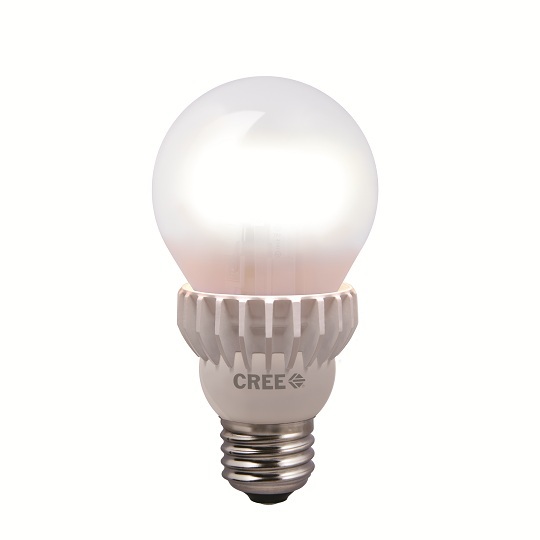The bar has been raised with the latest Cree, Inc. innovation – the Cree® TW (TrueWhite®) Series LED Bulb. The revolutionary bulb emits natural LED light – setting a new standard with a Color Rendering Index (CRI) of 93. Cree is the first company to meet the California Energy Commission (CEC) LED bulb specification. The new TW Series bulb looks like a light bulb, lights like a light bulb and gives consumers another reason to switch to LED. The new Cree bulb is available for US$ 19.97 for the 60-watt replacement.
California is yet again leading the nation with a higher standard for energy efficiency – this time it’s across the lighting industry. The introduction of Compact Fluorescent Lighting (CFL) led to a backlash of consumer dissatisfaction for many reasons, the greatest being its failure to provide Californians a quality lighting alternative to inefficient incandescent technology. New technology, like the new Cree TW Series LED Bulb, offers CA consumers a no-compromise alternative to CFL and incandescents.
 |
|
New Cree TW Series LED Bulb is the first to meet the California Energy Commission quality lighting specification. (LEDinside/Cree) |
The Sacramento Municipal Utility District (SMUD) has long been a proponent for energy-efficient lighting technologies for its customers. SMUD will provide a rebate for the new Cree TW Series LED Bulb. “SMUD sees huge value in reducing the lighting portion of electric bills and is a staunch supporter of the new CA LED Quality lighting standard,” said Elisabeth Brinton, SMUD Chief Customer Officer. “We are thrilled to see the first bulbs reach the market. This technical accomplishment makes a huge contribution to energy efficiency, while benefiting consumers with quality lighting,” said Brinton.
The CA specification focuses on six quality attributes for LED lamps, including color temperature, color consistency, color rendering, dimmability, lifetime and light distribution. The new CA standard requires all retrofit lamps to achieve a CRI of 90 or better – the higher the CRI of a bulb, the more accurate the actual color of the objects it illuminates.
“The Voluntary California Quality LED Lamp Specification was created to move consumers away from inefficient lighting of the past century and toward more efficient LED lighting technology,” said Michael Siminovitch, Director, California Lighting Technology Center. “The new Cree TW Series is the first bulb to meet the CA Specification and is exactly what consumers need to see in order to finally transform this marketplace.”
The new Cree TW Series LED Bulb delivers an unprecedented 93 CRI. The high-performance bulb uses 78 percent less energy and lasts 25 times longer than typical incandescent light bulbs. The bulbs turn on instantly, are dimmable with most standard incandescent dimmers and are backed by Cree’s industry-leading 10-year limited warranty. With a retail price of US$ 17.97 for the soft white 40-watt replacement (450 lumens) and US$ 19.97 for the soft white 60-watt replacement (800 lumens), the Cree bulb quickly pays for itself then pays consumers year after year.*
*Based on Cree TW Series LED Bulb 60-watt replacements at 13.5 watts, $0.11 per kilowatt-hour, 25,000 hour lifetime and average use of six hours per day.












